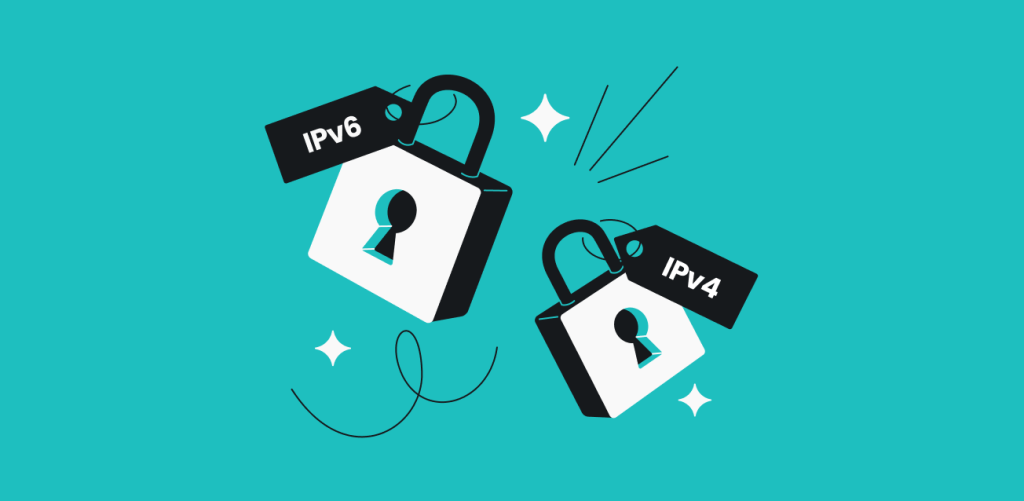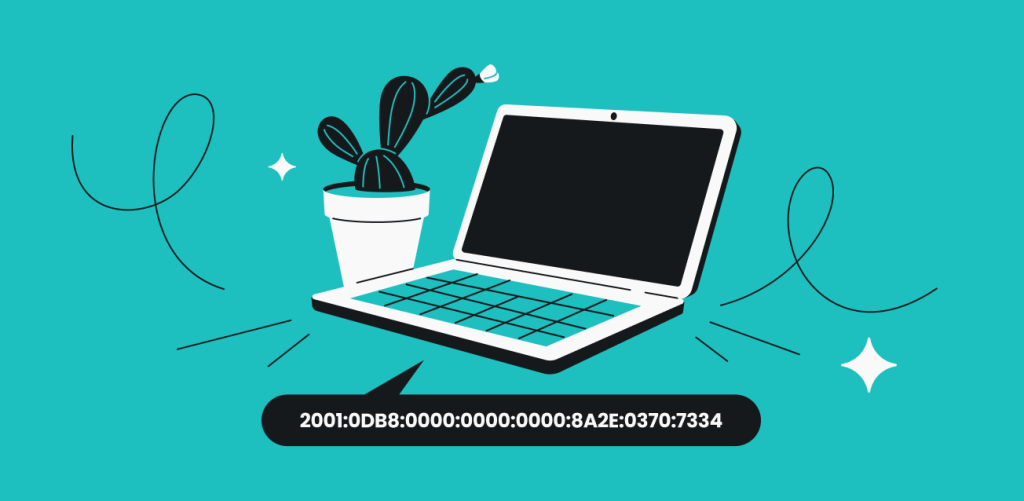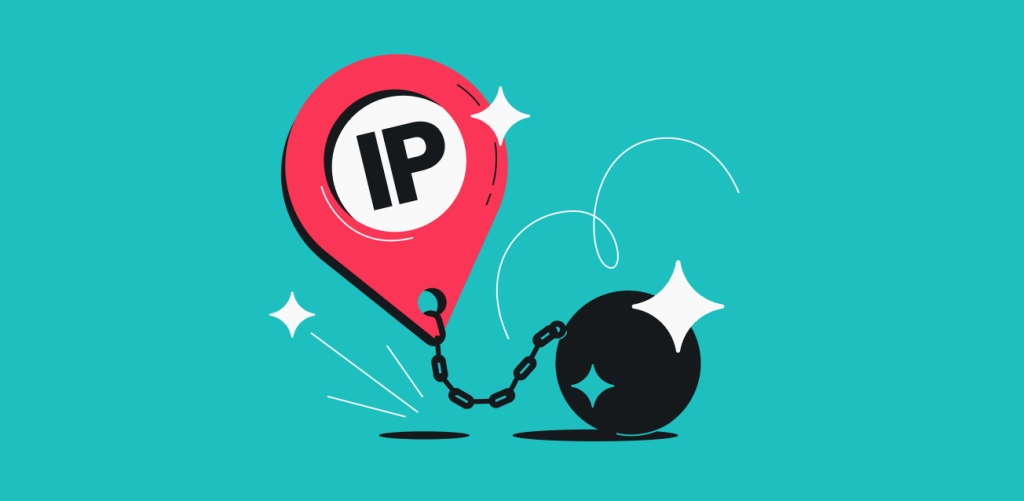
IPv4 is what makes the internet go round. Or, at least, it allows data from one online device to find another online device. However, IPv4 won’t last forever — IPv6 will replace it. But what are the differences between IPv4 and IPv6, and what do they do?
Table of contents
What is IPv4?

IPv4 — Internet Protocol version 4 — is the fourth generation of the Internet Protocol, the collection of standards that defines how the internet works. First deployed in 1982-1983, it is still used when routing most of the internet traffic.
Internet is basically synonymous with IPv4, as it’s the protocol that handles internetworking — that is, connecting disparate computer (and smartphone, etc.) networks into a global internet. IPv4 does what it does by having a logical address system and carrying out routing.
What is an IPv4 address?
IP addresses are basically internet addresses, marking devices similarly to how your address marks your home for mail delivery.
The addresses have evolved over time, but what remains unchanged is that it’s a 32-bit integer expressed as four octets — look, it’s a hard technical explanation.
Let’s just say that an address is made of numbers and separated into four segments by dots. Here’s how they look in practice:
172.16.254.1
195.12.166.212
92.249.36.4
This system gives 4,294,967,296 possible IP addresses.
When data is packaged for transmission, IPv4 mandates that the package contains the address of the device it’s trying to reach. This is an important part of previously-mentioned routing.
So when you send your friend a 🙂 (cos you’re a cold-blooded maniac) on Discord, the message doesn’t just go from your device into the internet wire and out into your friend’s device. No, it is routed — handed over as if passing a torch — by various nodes of the internet infrastructure. The IP address on the label ensures that it doesn’t get lost via all those handoffs.
What is IPv6?

IPv6 is supposed to replace IPv4 as the latter suffers from IP address exhaustion. IPv4’s 32-bit addresses give us 4,294,967,296 possible combinations — a lot, but not enough, considering there were 5.3 billion internet users in 2023.
While this didn’t feel like an issue when IPv4 was first adopted — they actually thought it was a test framework — the issue was spotted during the first decade of use. Several clever methods — like NAT (Network Address Translation) — were used to optimize address use, but none of them could postpone the issue indefinitely.
By 1998, the nerds in charge of the internet had finalized IPv6, which would use 128-bit addresses. This would give us 2128, or approximately 3.4×1038 addresses — I’m not typing that number out. But this may lead (some of our tech nerds disagree) to all network devices having their own public IP address instead of relying on NAT shenanigans.
What is an IPv6 address?
An IPv6 address is made of eight groups of hexadecimal (meaning 1-10 and A-F) numbers separated by colons:
2001:0db8:0000:0000:0000:8a2e:0370:7334
2001:0db8:0001:0000:0000:0ab9:C0A8:0102
2001:db8:3333:4444:CCCC:DDDD:EEEE:FFFF
There’s no chance we’ll ever memorize one of these babies! Good thing we don’t have to — DNS will pick up the slack the same as it does with current IPv4 addresses.
Of course, the address-forming method isn’t the only improvement when it comes to IPv6, but it is the most obvious one. There are other things under the hood, such as datagram (data bundle) size.
If you were to imagine the internet as a series of tubes (“Finally, vindication,” — Ted Stevens), not all of the tubes are the same diameter. Sometimes, your datagram just wouldn’t fit in the tube.
With IPv4, each relay determines the diameter of the outgoing tube and fragments the datagram into bits that will fit. With IPv6, this is pre-planned on your device. And if the entire route turns out to be just an XXL size modern network of, er, tubes, you end up transmitting a jumbogram, which can reach up to 4 gigabytes in size.
Our tech experts point out that considering the haphazard nature of the internet infrastructure and especially technical upgrades like router replacement, the pre-fragmentation feature is likely to have issues even if/when IPv6 is adopted worldwide.
Main differences between IPv6 and IPv4
Here’s a comparison of IPv4 vs. IPv6 side-by-side:
IPv4 | IPv6 | |
|---|---|---|
Address length | 32-bit | 128-bit |
Address format | 195.12.166.212 | 2001:0db8:0000:0000:0000:8a2e:0370:7334 |
Possible addresses | 4,294,967,296 | 3.4×10³⁸ |
Fragmentation | By sender and routers | By sender |
IPv4 vs. IPv6: which is better?
IPv6 is more advanced than IPv4, but is it better? Mostly yes, but here are some details:
Speed:
IPv6 is more efficient and thus faster. Features like multicasting — where you transmit data only to interested recipients — make better use of your bandwidth as you’re not sending out useless duplicate data.
Security:
IPv6 is inherently more secure because of security features that are baked into the system. IPv4 has to rely on security measures that the users employ, while IPv6 comes with address encryption and authentication by default.
Gaming:
There would be no more port forwarding with IPv6, which would make multiplayer gaming less complicated. NAT is one of the solutions to IPv4 address exhaustion. And since IPv6 has essentially infinite addresses, no NAT is required. Plus, you know, the whole “more efficient use of bandwidth leading to an increase in speed” thing.
Is IPv4 more popular than IPv6?
The vast majority of the internet still uses IPv4 instead of IPv6. Why?
Because it’s already there, and transitioning to IPv6 would be complicated and expensive. If you’ve ever worked a day in your life, you know that the fatcats holding the purse strings are extremely disinterested in spending money to improve IT infrastructure. That’s why you have banking systems running on coding languages that have almost no surviving practitioners.
IPv4 and IPv6 aren’t naturally interoperable, so various tricks need to be employed to make them play nicely. A full transition from one to the other may necessitate changes in hardware. For example, your router may not support IPv6, and the leadership at your ISP (Internet Service Provider) may not want to change them on the company’s dime.
In conclusion: IPv6 is the future
IPv6 will replace IPv4 — it has to. There are no good reasons for that not to happen, and we’ve already looked over the bad ones. So, if you’re considering whether your next IT purchase is futureproof, make sure it supports IPv6. And while we’re all on IPv4, how about increasing your security with a VPN?
FAQ
Should I use IPv4 or IPv6?
The answer currently depends on your needs and technical capabilities. Some apps, like Surfshark VPN, do not support IPv6 yet.
Which is better: IPv4 or IPv6?
IPv6 is better since it was designed to replace IPv4. However, IPv4 is still more widely used as the changeover would cost time and money.
Which is faster: IPv4 or IPv6?
IPv6 is the faster, more efficient protocol.
Is IPv6 better for gaming?
IPv6 is, in theory, better for gaming, but it depends on whether the game in question supports it.
Should you turn on IPv6?
If you can turn on both IPv4 and IPv6, you should do so. Having only IPv6 on could come with some accessibility issues as not all services support it.



